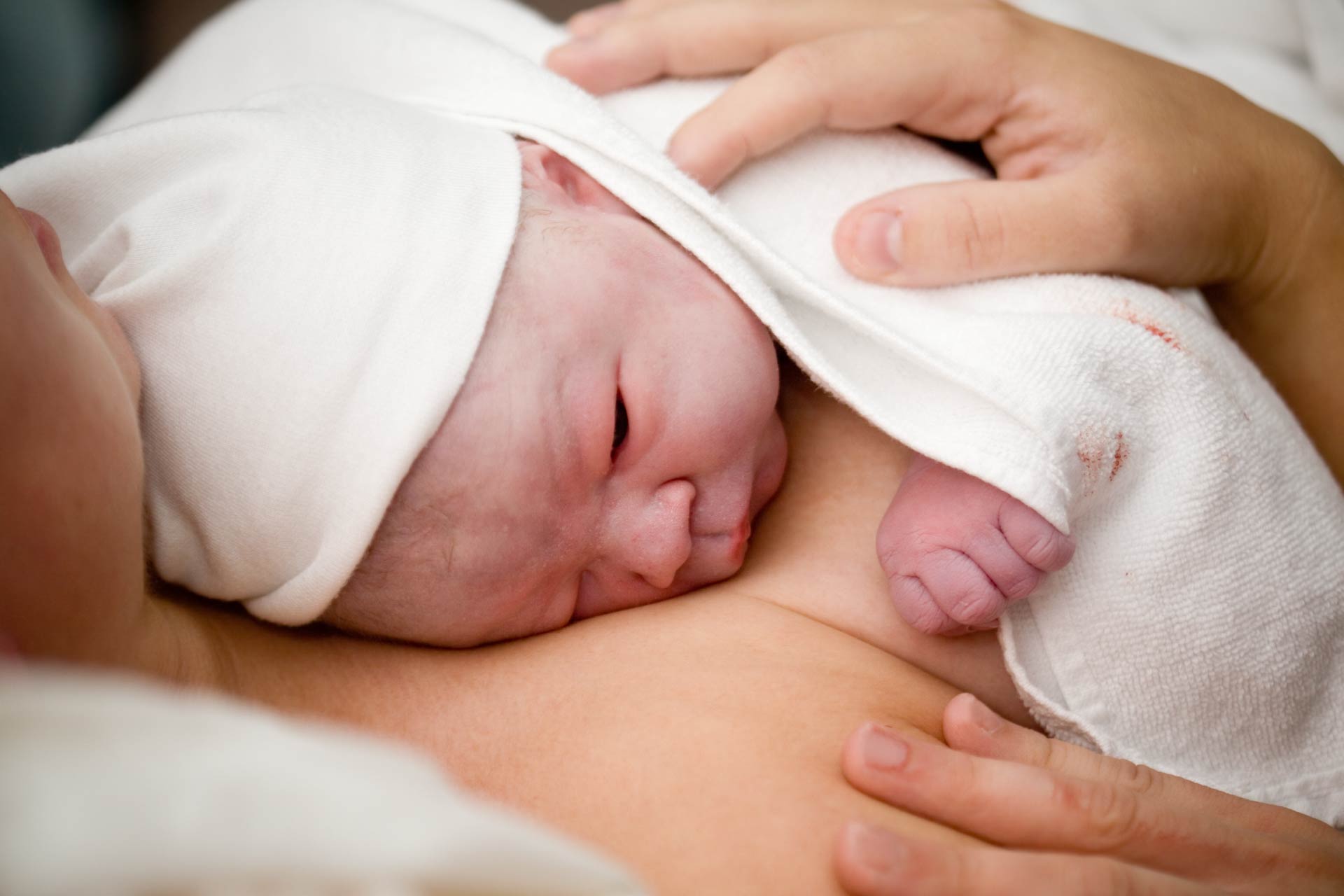• Delivery mode
• Bacterial competition
What is already known on this topic
Newborns have a simple gut microbial community and acquire a more complex, adult-like microbiota over the first three years of life. Delivery mode is one of the most significant factors influencing the microbiota composition during the first year of life. The early gut microbiota of infants born by Cesarean section is substantially different from that of babies born by vaginal delivery, but the underlying causes of this difference remain unclearWhat this research adds
Researchers compared the microbial profiles of 75 infants born vaginally or by planned or emergency C-section. Babies born by emergency C-section are exposed to the maternal vaginal microbiota in the birth canal, but delivered by C-section. During the first few days of life, both groups of babies born by C-section have a high abundance of Bacteroides, but at two weeks, they lack Bacteroides, despite one group having been exposed to the vagina during labor. Infants delivered vaginally have gut bacteria that match maternal rectal rather than vaginal microbes.Conclusion
The findings suggest that delivery mode is a more important factor than birth canal exposure in determining the composition of the infant gut microbiota.
Scientists have known that babies born by Cesarean section and those born by vaginal delivery have differing gut microbiota. Now, a study shows that this difference can be explained by the delivery mode rather than exposure to the birth canal during labor.
The results, published in Cell Reports Medicine, suggest that maternal seeding of the infant gut is not a straightforward transfer of the maternal vaginal microbial community, the researchers say. “Our findings demonstrate the complexity of establishing a microbial community and our lack of understanding of how obstetric care influences infants,” they say.
Newborns have a simple gut microbial community and acquire a more complex, adult-like microbiota over the first three years of life. Delivery mode is one of the most significant factors influencing the microbiota composition during the first year of life. Compared to babies born by vaginal delivery, those born by C-section have a reduced range of bacterial species in their microbiota and lower abundance of Bacteroides species. But the underlying causes of these differences remain unclear.
To study the acquisition of gut microbes immediately after birth, Moran Yassour at the Hebrew University of Jerusalem and her colleagues collected samples from 75 mothers and their newborns.
Delivery mode
The researchers enrolled in the study 40 children born vaginally, 19 children born by scheduled C-section, and 16 children born by emergency C-section. Babies born by emergency C-section are exposed to the maternal vaginal microbiota in the birth canal, but delivered by C-section.
The team collected rectal and vaginal samples from mothers less than a day before delivery. They also collected daily stool samples from newborns in their first four days of life. An additional stool sample was collected at home at two weeks of age.
More than 90% of babies across both groups born by C-section had detectable levels of gut Bacteroides species during their first week of life. But at two weeks of age, these infants were much less likely to be colonized by Bacteroides compared to infants born vaginally, despite one group having been exposed to the vagina during labor.
Bacterial competition
The researchers hypothesized that the loss of Bacteroides at two weeks of age in babies born by C-section could be due to competition within the infant gut. To address this question, they compared stool samples from infants born by C-section to those from babies born vaginally. They found a higher abundance of Streptococcus and Haemophilus bacteria in babies born by C-section, just before the drop in Bacteroides levels. In contrast, infants with persistent Bacteroides colonization had lower levels of Streptococcus, but not of Haemophilus.
“These results could suggest competition between Streptococcus and Bacteroides in early life as one factor contributing to the loss of Bacteroides in the second week of life,” the researchers say.
The team also found that all vaginally delivered children had at least one microbial strain that matched those of their mother, while only 25% of babies born by C-section did. However, infants delivered vaginally had gut bacteria that match maternal rectal rather than vaginal microbes.
The findings suggest that delivery mode, rather than birth canal exposure, has a strong influence on the composition of the infant microbiota immediately after birth. “Understanding the earliest microbial communities and their determinants is an important component of designing microbiome-related interventions to improve infant health,” the researchers say.











